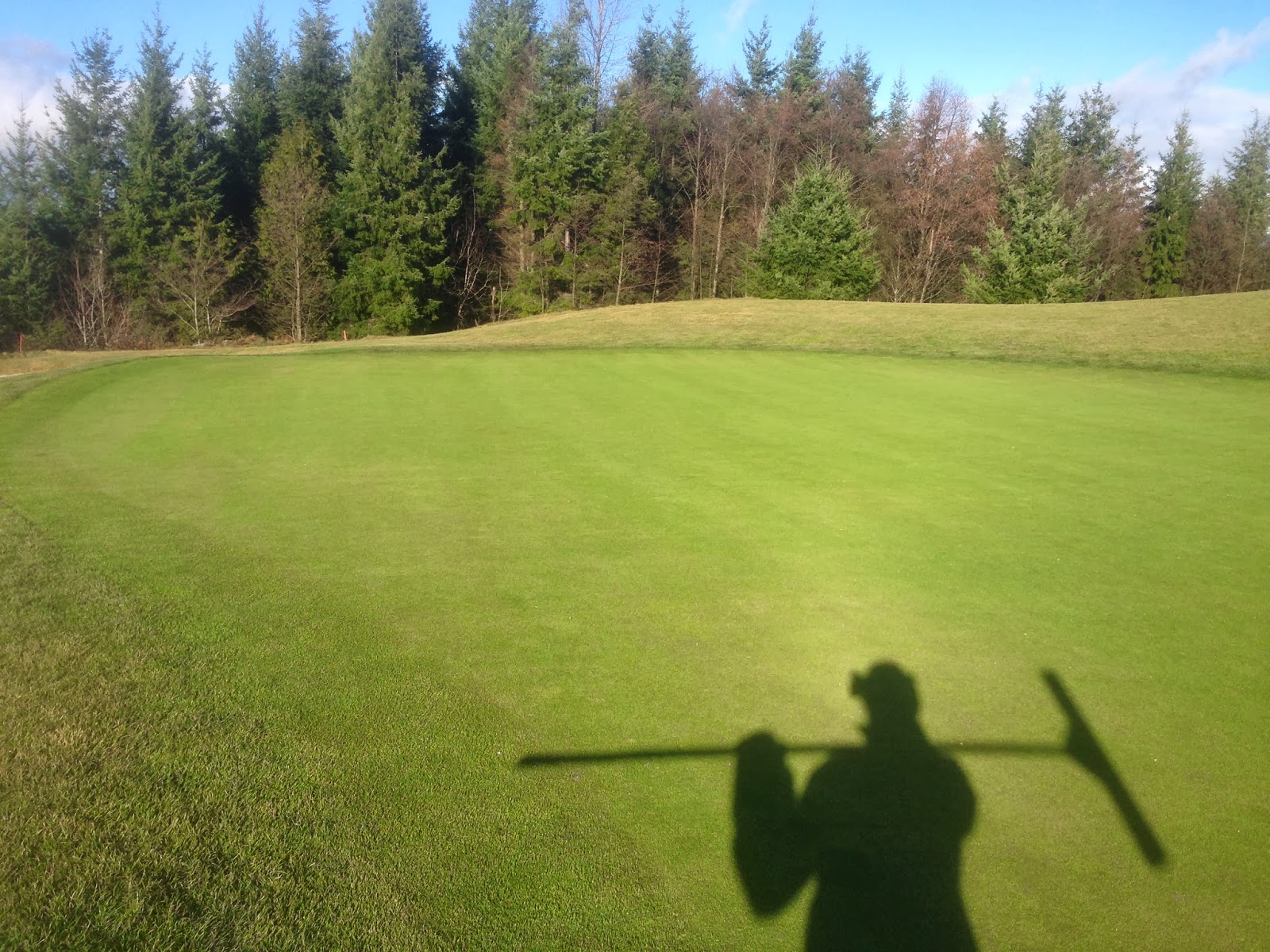Have you ever had somebody sneak up on you and dump a bucket water over your head that is so cold that you lose your breath? I have a feeling that is kind of how our Poa greens are feeling after this recent extended cold snap. We set records around the Puget Sound region for low temperatures that dipped into the single digits and teens for some areas over a period of the last eight days. Five of those days didn't even see the high temperature climb anywhere past 29 degrees. It was COLD!
When you grow Poa, anytime you experience weather extremes whether it be extremely high or low temperatures, you get a little concerned as the possibility of turf loss becomes very real. Extremes such as this cause Poa to lose basic physiological functions needed for survival. Last time we experienced a deep freeze like this one was 2009 and that was a rough year for golf courses throughout the Puget Sound region, as many Poa greens were unable to handle the weather extremes and simply checked out.
Initially, I had hoped that the deep freeze would have a little bit of moisture mixed in with it as that would have produced a little bit of snow which is one of Mother Nature's best lifelines for grass (to a certain degree of course) and would have given our turf a little warm blanket to hide under, away from the frigid temperatures. Unfortunately, the ridge of high pressure pushed all the moisture down to Oregon where they got the snow I was hoping we would get.
The good news is that we had a little bit of lead-time in which we were able to do a few things to prepare the greens for the deep freeze in order to give the greens the best odds we possibly could. As some of you noticed, we put a slightly heavier than normal sand topdressing application on all of our greens on the 29th. The sand simply serves as insulation for the crowns (growing point between shoots and roots) for the plant. While it is not as good as snow, it was better than nothing. The other thing we have working in our favor is we mixed a little green pigment in our last spray application. While the use of pigment has many benefits, one of them is the increase in surface temperature due to the reflection of light off a darker surface producing added insulation and quicker recovery from cold temperatures. Otherwise, there is not much else you can do except wait for the weather to change and growing conditions to improve.
I have been surveying the golf course all week and as of today, I am feeling cautiously optimistic. There are a few areas on the perimeters of our shady greens that look a little dinged up due to winter desiccation and may struggle through the rest of the winter a little bit. However, with conservative traffic management, I do not anticipate any major turf loss. The turf on all areas will be coming out of this cold snap a little off-color, especially our roughs and bunker faces where we have a lot of fine fescue and bluegrass. This is simply the defense mechanism of the grass dormant until growing conditions improve.
Right now, we are waiting for the green surfaces to soften up a little bit so the plants can begin re hydrating themselves and getting a little bit of rigidity back into the leaf blades as water moves back into the plant cell walls. As of this afternoon, any traffic across the greens right now is leaving very visible footprints in which the leaf blades are slow to bounce back. This means the Poa is not quite ready for golf. Check out the picture below: this shows actual footprint patterns of ONE foursome playing the hole like normal. That's why we've got to be careful not to expose the greens to traffic too soon. The forecast is calling for temperatures to warm up into the 40's with a little bit of rain which is perfect for what we need to help the greens recover from the shock of the cold snap.

To summarize, we need to make sure we give the greens the opportunity to re-acclimate themselves so they are strong enough to handle the foot traffic from regular play without causing any unnecessary injury. We will continue to monitor conditions and will be in constant communication with the pro-shop with further details as we want to get the golf course open again as soon as possible which should happen within the next few days. In the meantime, thank you for taking the time to read through this LONG blog post, for your understanding and patience as we work to get the course open again and please don't hesitate to contact me if you have any questions.



